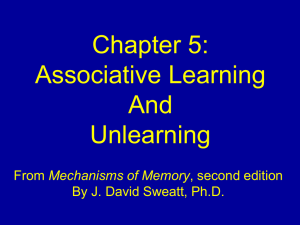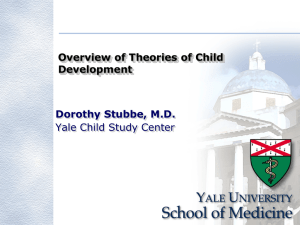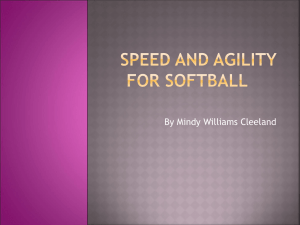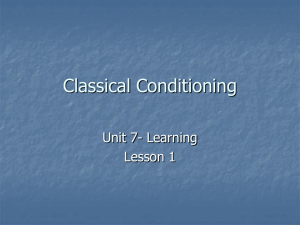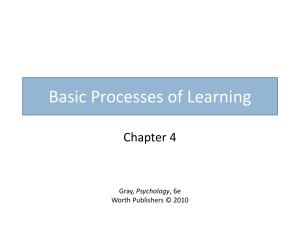Fear conditioning and extinction - Translational Neuromodeling Unit
advertisement
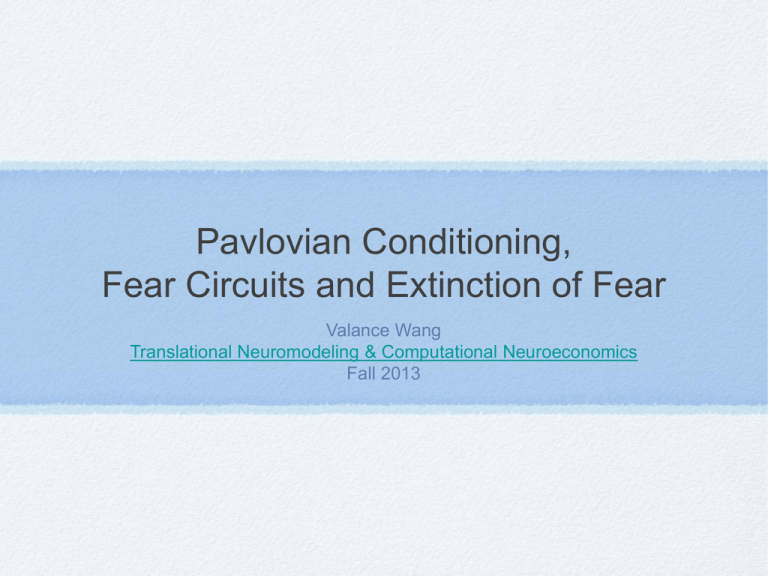
Pavlovian Conditioning, Fear Circuits and Extinction of Fear Valance Wang Translational Neuromodeling & Computational Neuroeconomics Fall 2013 Overview Pavlovian conditioning Definition and variations Fear conditioning and fear circuits in the brain Amygdala in human and animals Extinction of fear Pavlovian conditioning (or classical conditioning): Unconditional Stimulus → Unconditional Response Conditioning: ( CS → US )→ UR US is biologically relevant: reward (food, water) and punishment (noise, electric shock) air-puff to the eye Variations of Pavlovian Conditioning Second-order conditioning CS1 → (CS2 → US) Preconditioning (CS1 → CS2) → US Contingency in Pavlovian Conditioning US ¬CS CS P( US | CS ) = 0.4 CS US ¬CS P( US | CS ) = P( US | ¬CS) = P(US) = 0.4 CS P( US | ¬CS ) = 0.4 US ¬CS Contingency in Pavlovian Conditioning US ¬CS CS P( US | CS ) = 0.4 CS US ¬CS P( US | CS ) = P( US | ¬CS) = P(US) = 0.4 CS P( US | ¬CS ) = 0.4 US ¬CS Is this associative learning? Causal Attribution in Pavlovian Conditioning Blocking N → Unblocking L N Shock N Shock L Shock L N L Shoc k! ? Relative validity of X Relative validity of X Relation to drug addiction Fear Conditioning Fear conditioning Fear conditioning works across phyla: snails, worms, flies fish, pigeons, rabbits, rats, cats, dogs and humans Human Amygdala In humans Patients with amygdala damage shows deficits in perception of emotional meaning of the faces, esp. fearful faces, and emotional tone of voices. fMRI studies show that amygdala is activated more strongly in presence of fearful and angry faces than of happy faces. Fear conditioning leads to increased amygdala activity. Fear Circuits in the Brain Sensory inputs mainly terminate in LA: auditory thalamus auditory cortex fear conditioning to a simple auditory CS can be mediated by either pathway damage to LA interferes with fear conditioning Thalamo-amygdala pathway: single unit recordings show cortical pathway learns more slowly over trials than the thalamic pathway fMRI show that human amygdala’s activity changes during conditioning correlates with the thalamus but not the cortex Contextual conditioning: After conditioning, rats exhibited fear when returning back to the experiment chamber Contextual conditioning is mediated via hippocampus Ventral hippocampus projects to B and AB Damage to these areas interferes with contextual conditioning Output pathway: CE projects to brainstem lateral hypothalamus → blood pressure peraqueductal grey → freezing bed nucleus of stria terminalis → pituitary-adrenal stress hormone Role of amygdala in fear memory: Inactivation of amygdala during training prevents fear conditioning; Inactivation of amygdala immediately after conditioning blocks memory formation. In humans, damage to amygdala interferes with implicit emotional memory, but not explicit memories about emotions (which is controlled by medial temporal lobe). Extinction of Fear Extinction training: repeated presentation of CS without US Extinction training has not been successful, because the fear may return, for example with stress. A recent study in human attempts to extinct the fear by targeting at memory reconsolidation window. During reconsolidation, stored memory is rendered labile after being retrieved. Pharmacological manipulation in the reconsolidation window results in inability to retrieve the memory at later times. Extinction training conducted during the reconsolidation window successfully block the return of fear response. The effect remains after 1 year. The extinction effect is CS-specific. References Bouton (2006): Chapter 3: The nuts and bolts of conditioning. LeDoux (2000): Emotion circuits in the brain. Schiller et al. (2010): Preventing the return of fear in humans using reconsolidation update mechanisms. THank you!
